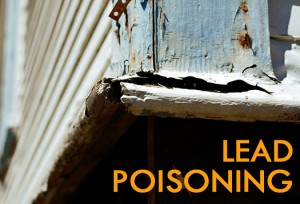Contributing Writer for Wake Up World
“As auto sales boomed after World War II, and drivers in powerful new cars increasingly asked service station attendants to “fill ‘er up with ethyl,” they were unwittingly creating a crime wave two decades later,” reports Mother Jones in “America’s Real Criminal Element: Lead.” As it turns out, contact with lead can give rise to aggressive and delinquent behavior, not to mention learning disabilities and lower IQ scores. When leaded gasoline was phased out in the 1970s, an interesting phenomena occurred: the crime rate substantially and consistently dropped. All the same, exposure to the heavy metal hasn’t disappeared completely as it still hides in the most ordinary of places – and, predictably, continues to bring about a spectrum of health and behavioral disorders.
The link between lead and criminality
[pro_ad_display_adzone id=”110028″]
Kim N. Dietrich, director of epidemiology and biostatistics at the University of Cincinnati College of Medicine, believes that lead can “miswire” developing brains in children, affecting areas of judgement, impulse control and anticipation of consequences – which ultimately can provoke aggressive behavior. In the late 1970s, Dietrich and a team of other investigators began to study some 300 pregnant women who lived in Cincinnati neighborhoods (usually the inner city) that were known for high numbers of lead poisoning cases. According to Chemical and Engineering News:
“From the time they were born until they were six-and-a-half years old, the young participants had their blood-lead levels measured 23 times. The average childhood concentration for the whole group was 13 µg/dL. Now adults in their 30s, the subjects are having their brains scanned and behaviors analyzed. And the results are eerie. As of 2008, 250 members of the lead study had been arrested a total of 800 times. The participants’ average blood-lead levels during childhood also correlated with their arrest rate.”
A modern health threat
Today we may not give much thought to lead exposure, thanks to the protective measures set in place over the years by the Environmental Protection Agency (EPA). Unfortunately, despite these efforts, the heavy metal is still present within our daily lives, silently obstructing the mental and physical health of children and adults alike.
… getting a dangerous dose is more common today than you realize – thanks to sources you’d never expect, such as ceramic dishes, art supplies, and even vegetables grown in city gardens. And although average blood lead levels are way down, new research shows that even low amounts can be harmful,” states Johns Hopkins University professor Ellen Silbergeld, PhD, in “Lead dangers still lurk in unexpected places.
Even small amounts of lead (4 ug/dl) in the blood can double the risk of a fatal heart attack or stroke. The same level can also encourage memory loss. Since lead is stored in the bones, when we have periods of high bone turnover (after a fracture, at menopause or during pregnancy), the metal is released into the blood, resulting in high blood pressure and kidney problems.
Hunting and fishing, home renovations, cosmetics, and even faucet fixtures are often sources of exposure. To learn how to protect yourself, have a look at these recommendations.
Sources for this article include:
http://cen.acs.org/articles/92/i5/Crimes-Lead
https://www.osha.gov/SLTC/lead/
http://science.naturalnews.com
Previous articles by Carolanne:
- Common Toxin in Your Pantry Causes Obesity, Diabetes, Infertility… and Much More
- Hemp – The Ultimate Cash Crop, Health Food and Environmental Savior Rolled Into One
-
Europe Embraces Healthy Raw Dairy by Unveiling Fresh Milk Vending Machines
- Confirmed by Science: You Really Can Change Your DNA – Here’s How
-
Chemtrails: Learn How to Protect Yourself From These Treacherous Poisons
- Top 10 Food Frauds: Formaldehyde, Plastic, Melamine & Caustic Soda Found in Common Foods
- Autistic Boy With Higher IQ Than Einstein Discovers Gift After Removal From State-Run Therapy
-
Enhance Spiritual, Mental and Physical Well-being with a Pineal Gland Detox
[pro_ad_display_adzone id=”110025″]
Please note: this article was first published on Natural News.
[pro_ad_display_adzone id=”110027″]







